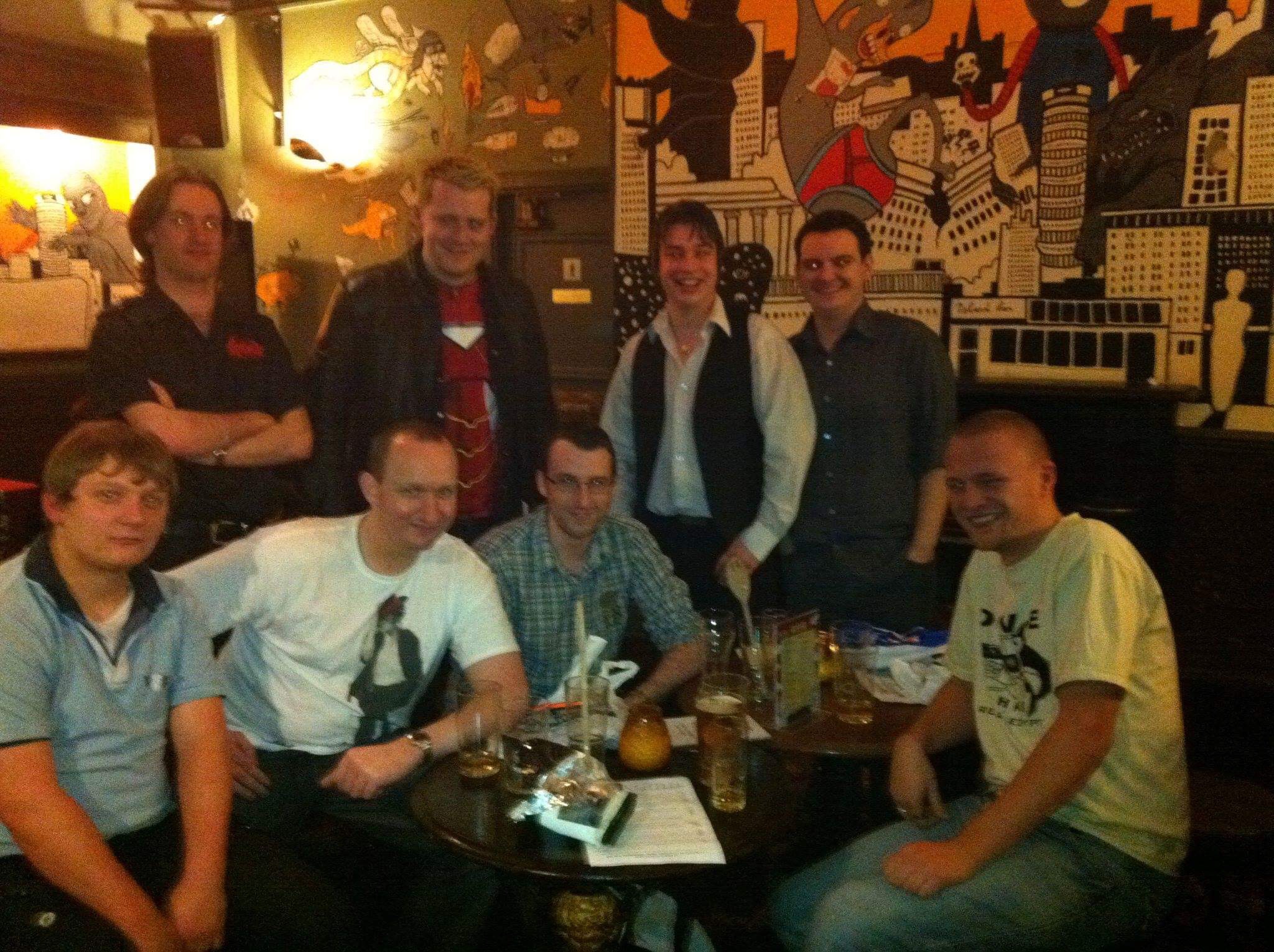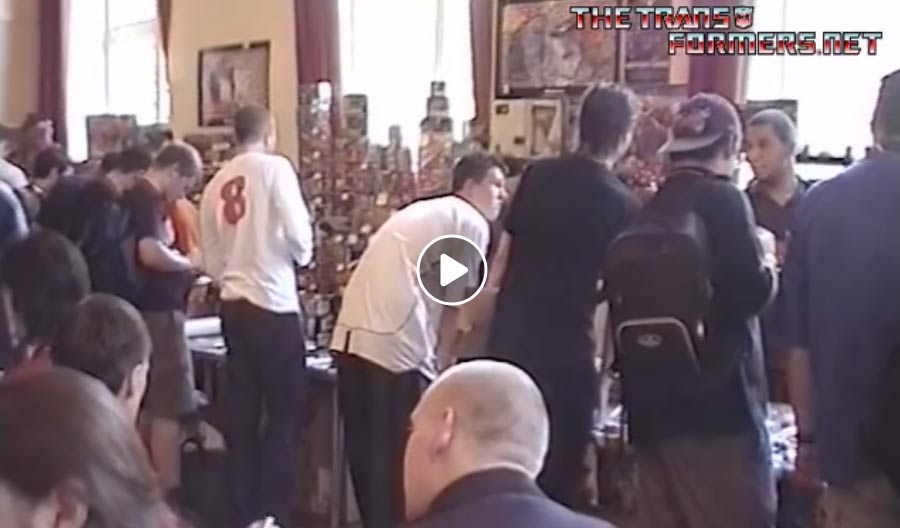We here at TheTransformers.Net have been talking to long time Transformers writer, guru and personal idol Simon Furman. Simon has found us a little slot in his busy schedule to talk to us about his time as Editor on Marvel’s The Transformers comic, and what he’s up to these days – which includes more Transformers you’ll be pleased to hear. So without further ado we’ll question the man, the mirth and the legend that isSimon Furman.
Simon’s note to TheTransformers.Net:
“Hi Darren, Thanks for your patience here. It’s been a mind-blowingly busy time, and I’m only just starting to work through a mountain of correspondence. Let’s go with the Q&A stuff (which I hope will also answer your other questions):”
Can you start by introducing yourself, and your role on Marvel’s The Transformers?
I started writing for the UK Transformers comic back in 1985 (in issue #13, a story called ‘The Enemy Within’). At this point, I’d done relatively little script work (some ‘creepy’ stories for Scream, an IPC comic) and Transformers I knew only vaguely from some TV ad spots. Nevertheless, when TF UK editor Shiela Cranna was pitching around for writers to originate new UK TF material (there just wasn’t enough US comic strip to sustain a fortnightly, as it was then, reprint title) I sent in a batch of story ideas. She liked a few of them, and I found these ‘toys’ were surprisingly interesting. Since then I’ve written many, many UK TF stories, and in 1989 I took over on the US TF comic.
The script writing industry is remarkably difficult to break into successfully, how did you mange it?
I really got into scriptwriting through the back door. I was working for IPC Magazines as a competitions journalist (writing copy for a wide range of magazines and comics, everything from My Guy to Popular Gardening, Woman’s Own to Buster). Back then IPC published a whole range of comics (2000 AD, Buster, Roy of the Rovers, Whizzer & Chips, Battle and so on). A lot of the stuff I did was for the comics bit, and eventually they asked me to come aboard as assistant editor on a companion comic to 2000 AD called Scream. It featured originated strips, and I got a first hand look at how to write for comics. They let me write a few myself (some episodes of the Dracula Files, a thing called Terror of the Cats and various one-shot stories). Looking back, they were pretty terrible, but I knew even then that this was what I wanted to do.
What influenced you to move into writing?
I’ve always been writing, ever since I was a kid. One very early school report praised my imagination AND my imaginative spelling! So I was always looking to write, in some way, or for something. The first idea was to be a full fledged journalist, but I was never sure I had the incisiveness necessary. As with most people, I sort of stumbled sideways into what I really wanted to be doing.
Have you, or did you at any time have aspirations to move into movie scripts?
It’d be great to do so, but I’m a realist. Getting a movie script written is one thing, getting someone to even look at it, let alone pick it up, is whole other thing. For the moment, I’m happy writing stuff for TV. But who knows, down the line a bit, if I get the right contacts…
The characterisation within the Transformers comic was well rounded, particularly those of Ultra Magnus and Rodimus Prime being hounded by self doubt and feelings of inadequacy. How did you come up with the characters for the Transformers, and are they based on anyone, fact or fiction?
To be honest, all the basic character stuff was already locked in. The character profiles were pretty well rounded, so all I had to do was run with that. What I did, was simply to flesh them out, give them rough edges and flaws and bright spots that people would be able to associate with. I’d approach anything (or any character) the same way, you have to make it as real as possible, even within the realm of sci-fi/fantasy.
In ‘Time Wars’ in particular a lot of main stream characters were killed off, how much of a problem was it to gain permission to eliminate nearly half of Hasbro’s Transformers toy line?
Permission, mmm. Did we ever ask permission? Certainly by the time we got to Time Wars, Hasbro weren’t over-scrutinising what we were doing. So we just did.
Have you written any scripts, or synopsis for Transformers comic stories that never made it to print, and if so, what were they?
The only TF story outline I remember submitting that never made it into print (and just as well) was a April Fools’ gag we tried on Hasbro US. It had giant nuns, mechanical sheep, school buses being squished underfoot and everyone died at the end. Rob Tokar (the editor of TF US) swears he has a copy of this, somewhere. If he ever finds it, I’ll be first in line to read it. Hasbro’s comment on all of this was, ‘but what happens afterwards?’. Sigh.
What things do you have to consider when writing for a comic as opposed to writing a short story, novel or script?
Comics have to be very in your face. In a novel (not that I’ve written any) or a short story, you’ve time and space to build up mood and atmosphere, in a comic you’ve got to grab the reader on page 1 (or at least lead them onto page 2). You’ve also got to think a lot more about page-to-page structure, about the way your story breaks down over 11 or 22 pages. You’ve also got to be able to visualise everything, from the way people look to how you want each panel staged and shot. It’s very like doing a film or a TV script, which was why I found the transition to TV animation straightforward. There are a few differences. In comics, you can afford to have characters stop and chat, in animation you have to keep them on the run all the time. You’ve a 22 minutes to pack a whole lot into, so any exposition has to be moving with the action. One thing I prefer about prose, as opposed to script, is that to an extent you’re opening it up to the reader to visualise, to flesh out. There are a lot more blanks for the reader to fill in, comics (or animation) does all that in the artwork.
What relationship do you now have with the old team from the Transformers comic?
I’m still in touch with a lot of the artists who worked on Transformers. Andy Wildman and I are still actively working together (see below), and I still regularly see Geoff Senior, Bryan Hitch, Barry Kitson, John Higgins and Lee Sullivan. A little more geographically removed are the likes of Mike Collins and Jeff Anderson, but we still keep in touch (I saw Mike at the recent Bristol comics con). Rob Tokar and I, though some 6,000 miles distant, are still very good friends. There was a really good team spirit that seemed to come with working on Transformers, UK and US, and it endures to this day.
In your own opinion, what is your favourite Transformers story, and do they compare well with other comics that you have written?
I still think my best TF stuff was the run from #69-80 of the US comic, the whole Unicron saga. It still holds up today, and I’m not sure I’ve ever bettered it (or had a better time doing it) since, in or out of TF. Of the UK strips, I love the Target 2006s and Time Wars and their ilk. I was always happiest writing stories which featured Galvatron, Unicron and Death’s Head (or a combination thereof).
Titan books have struck a deal to publish classic Transformers comics in graphic novel form, do you think this deal will lead to a possible return of the Transformers comic?
I’d love to say yes, but the realist in me doubts it. It’s certainly a step in the right direction. The Titan collections (which coincidentally collect TF US #69-80) arrive at an ideal time, especially with the US TV series TF: Robots in Disguise (a re-tool of the Japanese ‘manga’ TF series) airing this autum in the US. Maybe it’ll spur someone into thinking it’s a good idea again.
There are plenty of people pushing for this, but it’s going to take a big publisher (Marvel, Top Cow, Dark Horse, someone like that) to come on board and make it happen. The two Titan paperback collections, All Fall Down and End of the Road (new interlocking cover art by Andy Wildman) are out this August and November respectively. The first one looks fab, and if you’re lucky enough to be visiting this year’s Botcon US you’ll see (and have a chance to buy) the hardback cover variant edition (with art by Geoff Senior).
What advice can you give to someone wanting to move into, what is essentially, a fiercely competitive industry?
My advice to anyone trying to break into comics (or associated industries), be they writer or artist, is always have a back-up plan. It’s hard to break in, and once you’re in it’s sometimes hard to stay busy. So make sure that while you’re pitching ideas to publishers you’re also doing something that pays. A lot of artists and writers, myself included, have diversified into advertising, commercial art, non-fiction, reviews, and so on.
What are you working on right now?
Right now, and the focus of as much of my attention as time allows, is the web-based (for the moment at least) project (long in various stages of development) I’ve been working on with Andy Wildman. It’s called the Engine: Industrial Strength, and after several false starts it’s now set to debut this August, though the site will go on line in July. The site: www.whorunstheengine.net will feature new story material (presented in the form of text and visuals, all of which will have an element or two of interactiveness about them) and regular updates on what Andy and I are up to (plus new art, TF-related stuff, video interviews, background and a whole bunch of great stuff).

Alignment is exclusively available to pre-registrants of Transforce 2001. Writer – Simon Furman Illustrated by Geoff Senior, Lee Sullivan, Andrew Wildman, Jeff Anderson and other great Transformers names.
I’ve also just written a non-fiction companion book to an upcoming (this Autumn) Channel 4 series called Extinct!, which recreates (CGI-wise) extinct beasties such as the Sabre-toothed Tiger and the Mammoth. Other stuff includes development work for a TV series that may or may not be, and so is still very much under wraps, and a new TF story for this year’s Transforce con. It’s called Alignment (part one of two), and it features (finally) the continuation of, and resolution to, the whole Liege Maximo storyline (begun fleetingly in issue #12 of TF Gen 2 comic). It’s big, it’s epic, and it’ll be published as part of the convention booklet this year. Do not miss it. And that’s it.
Hope that’s OK. I’ll nag Geoff about his Q&A, but he’s also been v.v.busy.
Best, Simon Furman.
We’d like to thank Simon for taking the time to talk to us, and wish him the best of luck with his future projects – all of which we wait with baited breath to see.
































